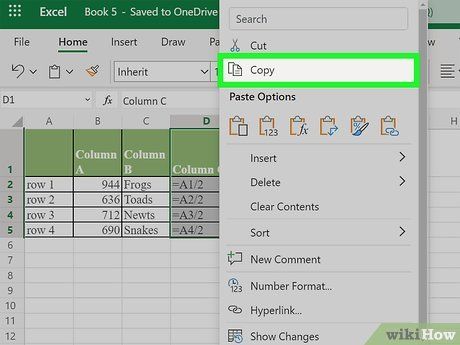5 Ways to Transfer Excel Formulas to New Sheets

When working with Microsoft Excel, efficiently managing your data can make a significant difference in your productivity. One common task for Excel users is transferring formulas from one sheet to another. This might seem straightforward, but there are several methods to achieve this, each with its own benefits depending on the context. Here, we'll explore five different ways to transfer Excel formulas to new sheets, ensuring your data remains accurate and your workflow remains efficient.
Method 1: Drag and Drop

The drag-and-drop method is the most intuitive way to move formulas. It's best suited for small datasets or when you need to replicate formulas within the same workbook.
- Select the cell or range containing your formula.
- Hold the left mouse button, drag the cell to the new sheet, and drop it.
- If you need to copy the formula, press Ctrl while dragging.
💡 Note: This method can be less precise if your sheet layout changes; consider checking references after dragging.
Method 2: Copy and Paste Formulas

Excel's copy-paste functionality is widely known, but here are ways to optimize it for formulas:
- Select the formula cell or range. Press Ctrl+C or right-click and choose 'Copy'.
- Go to your new sheet, select the cell where you want the formula, and press Ctrl+V or choose 'Paste Special' for specific formula pasting options:
- Paste Formulas Only: This option removes formatting but keeps the formula intact.
- Paste Values: This will remove the formula and paste only the resulting value.
💡 Note: Ensure your target cells are formatted correctly before pasting to avoid formatting conflicts.
Method 3: Using References

If you frequently work with large spreadsheets, this method can be a game-changer:
- In your new sheet, type a formula that references the original cell. For instance, if your formula is in A1 of 'Sheet1', type
=Sheet1!A1in your new sheet's cell. - This method keeps a live link to the original sheet, so changes in the source sheet will automatically update in the new sheet.
Method 4: Importing and Linking Sheets

For those dealing with extensive data across multiple sheets or workbooks, Excel's importing feature can be invaluable:
- Go to the Data tab, choose 'Get Data' > 'From Other Sources' > 'From Microsoft Query'.
- Select your data range from the existing sheet and set it as an external data source in your new sheet.
- This setup creates a dynamic link, updating data as changes occur.
| Method | Best For |
|---|---|
| Drag and Drop | Small datasets, replication within the same workbook |
| Copy and Paste | Transfers to new workbooks, simple transfers with optional formatting |
| Using References | Large datasets, dynamic updates from source sheets |
| Importing and Linking | Integration of external data, automatic data refresh |

Method 5: Excel Macros

If your transfer needs are more complex or repetitive, creating a macro can automate the process:
- Open the Visual Basic Editor by pressing Alt+F11.
- Insert a new module and write a script to copy formulas from one sheet to another, adjusting cell references as needed.
- Assign the macro to a button or keyboard shortcut for ease of use.
💡 Note: Writing a macro requires some knowledge of VBA, but there are many resources available online to help you learn.
Each method offers distinct advantages for transferring Excel formulas. By selecting the approach that aligns with your data size, the frequency of updates, and your comfort with Excel's features, you can streamline your work, reduce errors, and enhance your data management capabilities. Remember, practice makes perfect in mastering these techniques, so don't shy away from experimenting with different methods to see which suits your needs best.
What is the best method for transferring formulas if I need to update the data frequently?

+
For frequent updates, using references or importing and linking sheets would be the most suitable. These methods ensure that any changes in the original data are automatically reflected in the new sheet.
Can I transfer Excel formulas to another workbook?

+
Yes, you can transfer formulas between workbooks by using the Copy and Paste method or by linking sheets. However, for live data updates, linking is preferable as it maintains the connection between the workbooks.
What should I do if my formulas aren’t transferring correctly?

+
Check for:
- Correct cell referencing in the destination sheet.
- Ensure the referenced sheets are open or the external links are functional.
- Paste using ‘Paste Special’ if the formula involves external references or if only the value should be transferred.
Are there any risks when using VBA macros for formula transfer?

+
Macros can introduce risks if not written correctly:
- They might accidentally overwrite data.
- Security concerns if macros come from unknown sources.
- Compatibility issues across different versions of Excel.